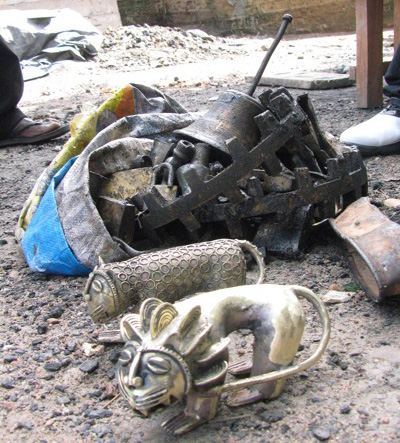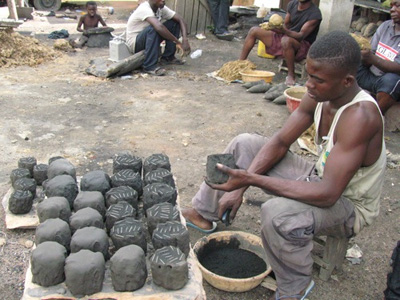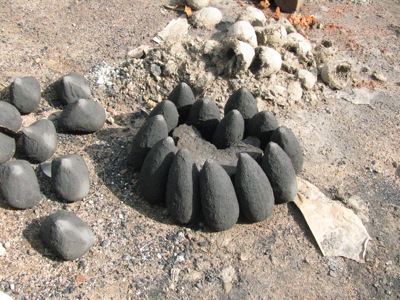Brass
Part six (of six) of the Ghanaian Handicraft series.
I’ve left the most complex handicraft until the end. I’m ashamed to admit how long it actually took me to figure out just what the heck was going on. A metallurgist, I’m not. But it is also arguably the coolest craft I learned. Here’s why.

Brass artisans take take the trash of technology — gears, circuit boards, wires, pipes — and transform it into art. It seems so right — such a fitting way to repurpose what otherwise would be non-biodegradable and in some instances toxic. (Glass bead artisans do something similar with discarded bottles.)
Specifically brass workers strip zinc and copper where it can be found and, though the level of impurity is high, they’re able to forage quite a bit.
But let’s back up. Making brass is relatively easy compared to getting it into the shape you want. Basically the art in this craft is all about the mold. It starts with long strings of honeybee wax. How the wax is shaped is exactly how the envisioned product will look. That is, where wax is in your model is where the liquid brass will harden. So get it right.
Charcoal is the material around which or through which you place the wax. It holds things in place. So, as in the video above let’s say you are making hollow, decorative spheres (for a necklace, for instance). A charcoal ball at the middle supports the wax decoration which will eventually becomes the brass.

OK, follow me on this. It hurts the brain a bit. Charcoal is packed around the finished wax model too. So basically you have the shape of the final product, in wax, completely surrounded by charcoal. Then this is all encased in a mud and straw crucible.
The key to it all is that there is no wax isolated completely inside the crucible. It all touches some other wax and is finally connected to strands of wax that poke out of the charcoal. See where this is going?

The crucibles are heated around a fire and the wax melts. It is drained out — thanks to nothing being isolated and the “channels” of wax that stick out of the mold. What you have is a perfect inverse mold of what you’re trying to make. Just pour in the brass (melted obviously) and let it set. Chip away the charcoal and voila! Brass from trash.

More brass-making video here.













